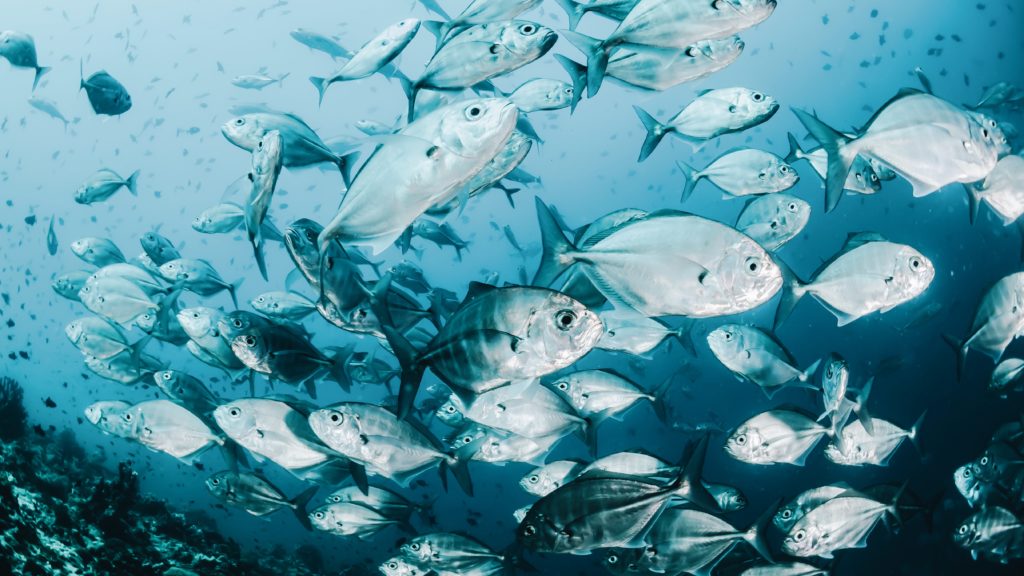The Aquatic Life Institute (ALI) is defining aquatic animal welfare for the first time ever, answering key questions about their quality of life and finally putting to rest the question, ‘Do fish feel pain?’ Spoiler alert: Yes.
According to the ALI, aquatic animal welfare is a “highly neglected” issue. Approximately 100 billion marine creatures are farmed annually and experience what the institute refers to as “high-suffering” conditions.
By clearly defining aquatic animal welfare, the ALI aims to improve animals’ quality of life throughout fish farming and aquaculture. The institute is currently spearheading research into this area and has formed the first-ever coalition for aquatic animal welfare, the Aquatic Animal Alliance (AAA), of which there are now 14 members.
This coalition has targeted major certification labeling schemes around the world, such as GLOBALG.A.P. — a leading farm assurance program — to push for the inclusion and further improvement of aquatic animal welfare standards.
“Our initial members (Compassion in World Farming, The Humane League, Fish Welfare Initiative, Eurogroup for Animals, Mercy for Animals, Animal Equality, and Dyrevernalliansen) have made up the core group in submitting our feedback to various labeling schemes,” ALI founder William Bench told LIVEKINDLY.

Do fish feel pain?
Numerous experts now confirm that fish experience pain, including Professor Victoria Braithwaite, author of Do Fish Feel Pain? (2010). While other studies indicate that, just like terrestrial animals, aquatic creatures are sentient, form friendships, and experience positive emotions.
Bench told LIVEKINDLY that the main welfare issues with aquaculture include the lack of environmental enrichment, inappropriate feeding, lack of space, poor water quality, and ineffective stunning before slaughter. In short, problems comparable to those found in large-scale factory farming.
The institute’s Key Aquatic Animal Welfare Recomendations for Aquaculture guide outlines five primary welfare indicators that target these issues. The ALI developed these points during conservations with other global experts in the field.
These recommendations include freedom to access sustenance, freedom to live in an appropriate environment that enables wellbeing, freedom to live without undue risk of disease and injury, freedom to have sufficient space and companionship — through which to exhibit natural behaviours — as well as freedom to live in conditions that support good psychological health.

Is aquaculture better than overfishing?
The Food and Agriculture Organization of the United Nations (FAO) reports that aquaculture is the fastest growing sector of food production. Today, it accounts for 50 percent of the world’s fish eaten for food. Worldwide, the industry farms approximately 580 different aquatic species.
In addition to welfare concerns, studies also show that some farmed fish contain a higher quantity of both natural and human-caused toxic substances. These include antibiotics, pesticides, and other pollutants.
Some view aquaculture as a solution to the environmental cost of overfishing. But Bench explained that the industry also uses more than 50 percent of all caught fish to feed farmed fish. According to the ALI, humans kill between two and three trillion aquatic animals in the wild each year, which has a significant impact on the marine environment.
“Aquaculture directly impacts the conservation of wild fish populations, and the gap between these two movements need to be closed,” he said. “The lack of welfare considerations in capture fisheries invariably leads to higher mortality rates and inefficiencies, depleting fish populations even more.”
The ALI’s Coalition for Aquatic Conservation (CAC) aims to unite advocates for farmed and wild aquatic animals along with other environmental protection groups to promote close cooperation and further dialogue. Bench told LIVEKINDLY that the environmental enrichment-based welfare criteria represent a “huge victory for farmed aquatic animals.”


